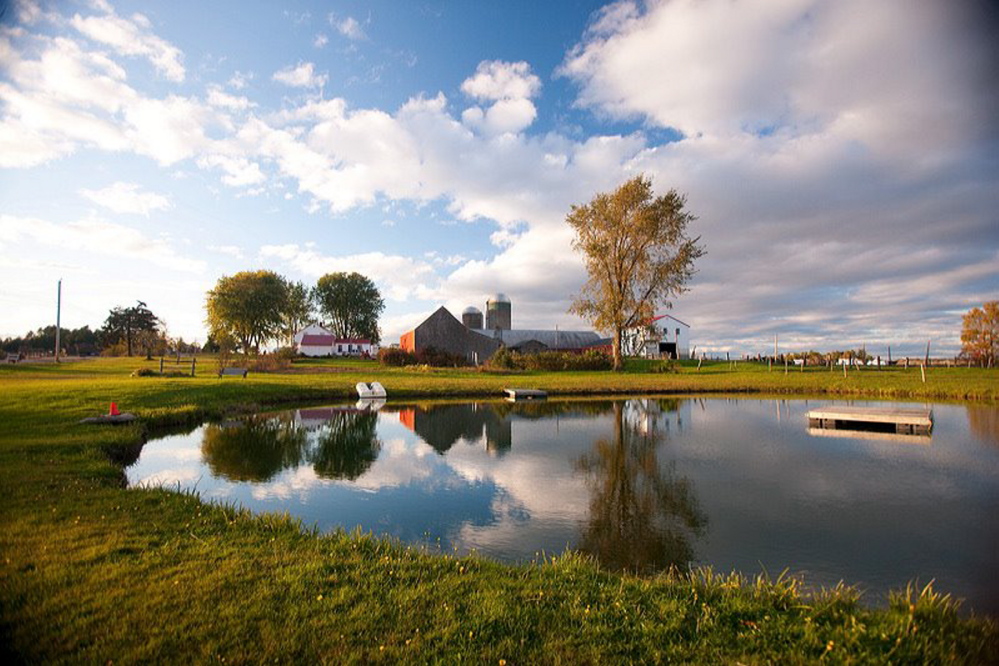GORHAM — This year’s Maine Food Strategy report was certainly encouraging to Maine farmers. The consumer survey, which asked Maine households about their attitudes and buying preferences around locally grown, raised and harvested food, showed that 80 percent of Mainers want to purchase more locally harvested food.
However, the report also notes that the biggest barriers to consumers actually purchasing locally grown food are “lack of access,” at 24 percent, and “inconvenience,” at 20 percent.
That’s not exactly new news for Maine farmers, who have long understood the challenge of getting food to consumers – or, better yet, getting the consumers to come to those of us who have farmstands or on-farm stores.
To do that, people have to first know about our farms and, secondly, how to find us. The old joke about “you can’t get there from here” can certainly seem less funny if you’re looking for a farmstand.
Earlier this year, Maine lawmakers passed a law allowing farmers to advertise nonperishable products on farm signs – which had been outlawed under Maine’s no-billboards laws. With advertising budgets often nonexistent for small farmers, signage plays a big role in helping us let consumers know where they can find the fresh, locally grown products they are looking for.
Farm signs may seem like a basic thing, but the truth is that Maine farmers have had to push hard over the years for something as simple as allowing signs to help people find our farmstands and farmers markets.
While I certainly applaud the efforts of the Maine Farm Bureau and others who helped make those changes possible, I also think that there is more to be done to help make it easier for farmers to connect with the growing number of consumers who want our products.
I’m proud to be a fourth-generation farmer and I love farming, but it has never been the easiest business, and we have had to adapt to many changes over the years.
My great-grandfather bought our farm, and it operated as a dairy farm for four generations. When the dairy industry went through a rough time about a decade ago, we decided to diversify and raise grass-fed beef, and supplement that with lamb, pork and a variety of vegetables.
Over all these years, one thing has been constant: Whether it’s highway signs or grocery store labeling, marketing local food to the consumers who want it has always been critical to farmers.
Consumers are used to convenience, and while they report they want locally grown food, it isn’t always available at their local grocer.
Consumers might not understand that it’s a real challenge for small farms to get their products into large markets and grocery stores, so many farmers count on consumers to come to us in order to sell our products – maybe at a farmers market or, increasingly, at the farm.
Open Farm Day, a statewide event each summer that invites the public to learn about the business of agriculture at participating farms, is a wonderful way to get people on our farms, but it is just one day a year. Just imagine the economic effect it would have on Maine’s farm families if people came to visit our farms all year round.
If just half of the 80 percent of people who, in the Maine Food Strategy survey, said they want “to purchase local or Maine food” went a few miles out of their way to shop at their local year-round farm store or farmstand, it would really make a difference, not only to farmers, but also to all agriculture businesses here in Maine.
Allowing some more signs is a good step to help us market our farms and support the agricultural industry. The real opportunity I see is to get people to just follow the signs, maybe go a bit out of their way and come regularly to purchase food at our farms.
But even with the signs, and even if they came out to visit us on Open Farm Day, it really depends on how truly motivated those consumers are – not only in the summer, but all year long.
— Special to the Press Herald
Send questions/comments to the editors.


